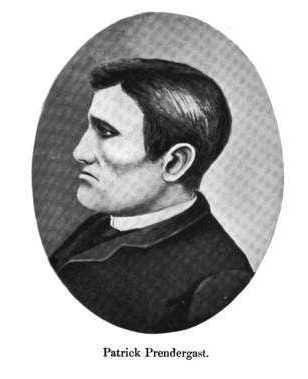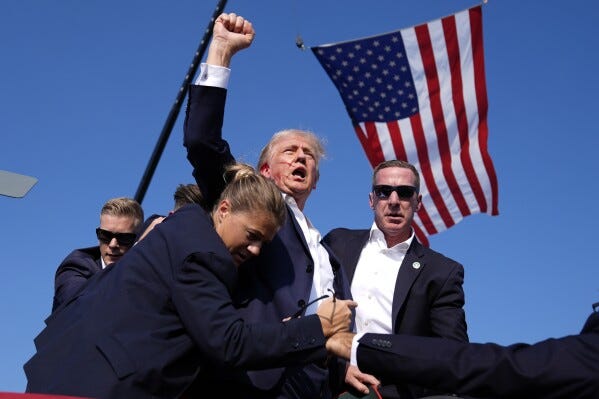“Who is Patrick Prendergast?”
My son caught me between chores, and at first I didn’t know what he was talking about.
“Who?”
“Patrick Prendergast. He walked into a tree.”
“That’s weird. Did he do it on purpose?”
“No, he just walked into a tree.”
“Is this someone one of your friends told you about? Or someone you saw in a show?”
“No. He’s in The Devil in the White City.”
Ah. Such was my re-introduction to Prendergast. I’d read Devil years ago and loved it. Then I’d recommended it to my fourteen-year-old, who reads eclectically. I knew he’d dig the mix of city history, true crime, and cultural analysis in Erik Larson’s 2003 book about Chicago during the building of 1893 World’s Exposition. The characters include an incredible and famous architect, a well-known landscape architect, a terrifying serial killer, a rising star running the midway, and many other average people who lived (and some of whom died) in an exciting, wonderous time at the end of the nineteenth century. I hadn’t remembered Prendergast when my son asked about him, but we concluded that what had happened with him so far in his reading—the tree encounter, some other awkward, ominous encounters with government officials—portended some bad end.
Sure enough, a few days later, Sam told me.
“You know that Patrick Prendergast? He shot Harrison, the mayor of Chicago.”

A week or so later, I was outside the Chapel of the Resurrection at Valparaiso University, my alma mater. Our oldest son had just spent some time there for a music intensive, and we’d come to hear him play the organ and attend a concert. A dear fellow college friend and I had been reminiscing about our time on campus just before going in. We were nearly to the doorway when she gasped and stopped walking. She was looking at her phone.
“Oh, my goodness.”
“What happened?”
“My sister just texted. Trump has been shot.”
We were shocked, just like nearly everyone else. And the location, already full of memories for us, gained another. I remembered being in nearly the exact same spot on September 11, 2001, going into the Chapel for morning prayer time to sing with the Kantorei, the Chapel choir, in a last-minute addition to the service where we all sought reassurance. Now another act of violence had happened. It was different; less personally scary and tragic, though hugely destabilizing and another marker of civilizational unrest. It feels like a seismic change, with the aftershocks still occurring.
Peggy Noonan wrote about this three days ago, which already feels like a week ago as more questions than answers arise about the assassination attempt. She said something about Thomas Crooks, the aptly and unfortunately named young man who was identified as the shooter. “As I write, [our political leaders and media class] are calling the 20-year-old would-be assassin ‘a loner.’ They have been calling assassins and mass murderers loners since I was a child, since Lee Harvey Oswald.” She then adds, pithily: “For loners, they sure are a big group.”
At first, I thought of how accurate that observation is, mainly because evil manifests itself over and over and over again, through history, in isolated and frustrated individuals. Patrick Prendergast is one. He really did seem to think that Mayor Carter Harrison owed him a job, and after being thwarted, showed up at his house one evening and shot him at point-blank range.
But now, as the days pass and more strange and, frankly, unbelievable details emerge about just how Thomas Crooks managed to trek across a mile of a field, including through security and into a restricted area, while carrying a ladder, an AR-15, and other various and sundry tools and weapons designed for precision violence, without being stopped, this assassination attempt takes on a darker hue.
[Crooks] strolled around the premises in broad daylight, using his rangefinder to calculate the distance to where Trump spoke. Police observed him for between [thirty] and sixty minutes. Then Crooks used his newly purchased five-foot ladder to haul his gear around fifteen feet up onto the roof of the building where he would shoot the President. Acting alone.
This more than smells like a young man who has been affected by online discourse, who decided to climb out of his basement to do something terrible and drastic. It positively reeks of involvement of skilled and manipulative others, pushing and prodding and allowing for otherwise extremely suspicious and dangerous acts to play out, acting quietly behind an easy—too easy, it appears—facade of an unknown young white man. Even John Wilkes Booth didn’t head to Ford’s Theater without spending more than a year in the company of others who’d planned to abduct Lincoln. These things don’t just happen.
Except when they do.
Many people have already spilled countless words about Trump’s defiant response to the attempt on his life, so I won’t do that here. I think it’s true that something changed in history with the bullets that flew on Saturday. Noonan acknowledged Trump’s epic fist raise, as did N.S. Lyons, who went on to make comparisons with our former president and Napoleon, another world leader with his own mythos of invincibility. Trump, in his own way, has become Napoleonic (pardon the language here):
But witnessing him, in response to whatever whisper of Providence, tilt his head at precisely the right moment and degree to cheat death, I and it apparently many others can’t help but feel like he may be more than lucky – that he now seems as much myth as man.
And when he emerged, shaking off his bodyguards and streaked with blood, to stand and pump his fist in defiance beneath the American flag (as captured by a photographer who just happened to be there at the perfect place and time to reveal an era-defining symbolic image), this was rightly described by awed watchers in the stands and across the nation as “epic.” Maybe epic is the word that comes to their mind only because it’s become internet parlance for “cool shit.” But I suspect that they may mean more than that, that they may be attempting to describe the deeper charisma of someone who really seems to somehow have become a man of destiny, and that they intuited the scene as truly epochal in its meaning.
True loners, like Prendergast, can do incredible harm. But usually they don’t, because they’re usually, you know, alone. Mountain men spring to mind, the slightly odd and forbidding outdoor rangers who do their own thing.
The loners that we tend to remember, though, are the ones who march by the beat of their own drummers, for better or for worse. They might start out alone, and they might even stay removed from others—hello, Lone Ranger. But they manage to bring along others with them, who lead people to think that our world can be different. They might lead bombastically and emotionally, and even tragically, or maybe inspiringly and with great honor and morality. Their message might not be wholly positive. Maybe the world can’t actually be much better than what it is. But maybe it can be defended. Maybe people can feel like they can do something to stem the tide, to resist what seems inevitable.

I don’t know how all of this will play out. None of us do. But maybe we can all pay more attention to the people around us, to notice when things are happening that merit our immediate responses. Like a young man walking into a tree, or a young man with a ladder and a gun.
What will we do when we see such things?



